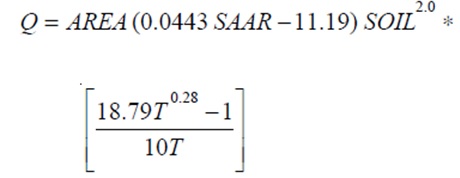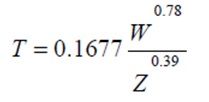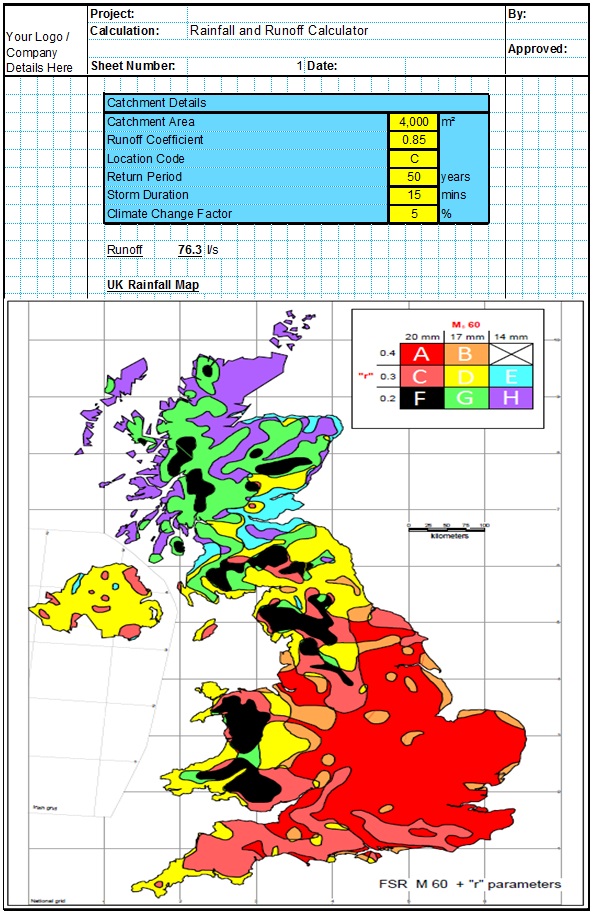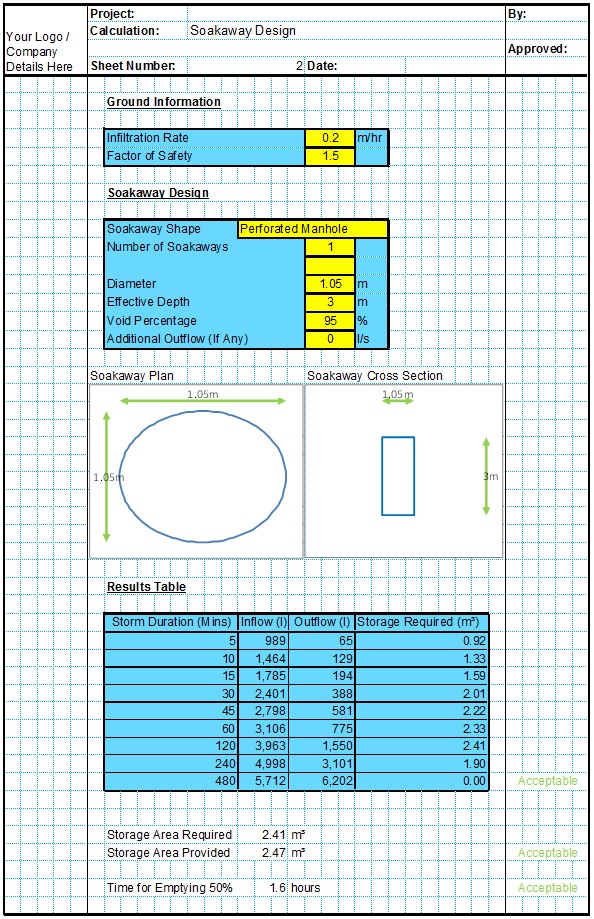The Agricultural Development and Advisory Service (ADAS) Method originates from the ADAS Report 345 completed in 1980. The report was primarily aimed at small rural catchments to aid field drainage design for agricultural land. The ADAS Report 345 Method is based on a combination of other studies including the Flood Studies Report and the TRRL method.
ADAS 345 Calculations
The ADAS 345 Method estimates the runoff using the following equation;

AREA (km2)
This is the catchment area being considered. The ADAS 345 Method is based on catchments smaller than 30ha, so caution should be used if the catchment is greater than 30ha.
SAAR (mm)
Standard Average Annual Rainfall is the rainfall expected on the catchment for the year. This factor is the same as that used in the Wallingford Procedure and IH 124 and is described in more detail here.
SOIL
The WRAP SOIL Index value used in the ADAS 345 Method is the same as the Wallingford Procedure as described here.
Time of Concentraton (T) (hours)
The Time of Concentration is the time between rainfall landing on the catchment and the water reaching the discharge point. This is described in more detail here.
The ADAS 345 Method uses the Bilham formula to calculate the Time of Concentration. Other methods of calculating the Time of Concentration such as the Kirpich Equation, Kerby Formula or Bransby Williams Formula could be used. However as the runoff formula has been correlated using the Bilham Formula, this is recommended and is used in the CivilWeb Rainfall & Runoff Calculator spreadsheet.

Maximum Catchment Width (W) (m)
Average Catchment Height above Discharge Point (Z) (m)
Applications & Calculation Spreadsheet
The ADAS 345 method is included in the CivilWeb Rainfall & Runoff Calculator spreadsheet and is usually used for small rural or agricultural catchments, often in the design of field drainage or land drains in fields. The catchments must be small, less than 30ha with little impervious area. This is because the method does not include for any overland flow.
It remains the only runoff method in the UK based on very small rural catchments, and therefore it is sometimes used in the UK for estimating initial greenfield runoff rate for comparison when planning for development. It can be used as a check on the more commonly used IH 124 Method for greenfield runoff rate.
Other uses are however very limited and the method can underestimate greenfield runoff on saturated catchments. For larger catchments the REFH, Flood Estimation Handbook or Wallingford Procedure Modified Rational Method are usually used.
Related Spreadsheets from CivilWeb;
Runoff Calculator Spreadsheet
This spreadsheet calculates the design runoff flow for a site in accordance with the a number of different methods including the Wallingford Procedure.
Soakaway Design Spreadsheet
This spreadsheet calculates the requirements for a soakaway system and assists the user to design a suitable system.

